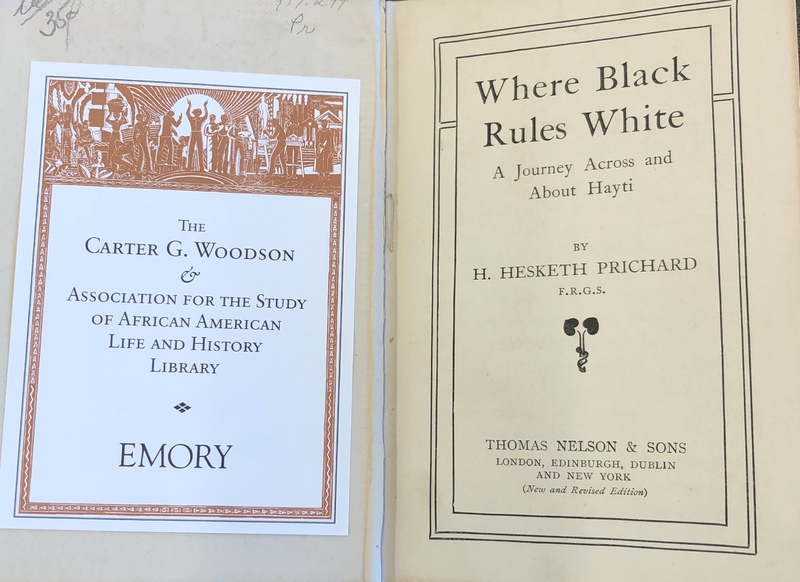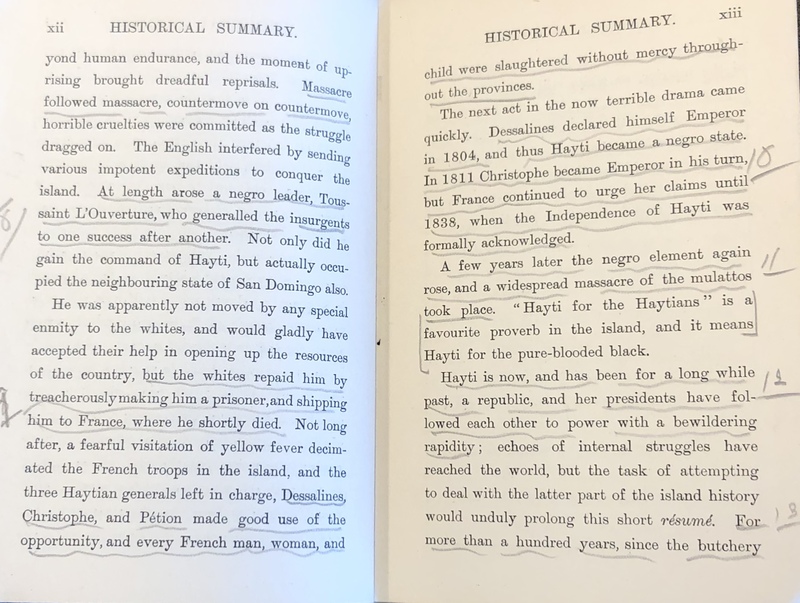Where Black Rules White: A Journey across and about Hayti
Where Black Rules White: A Journey across and about Hayti represents the unique nature of Haiti as a popular island for exploration post-colonial independence. To see Haiti through Prichard’s photographs and descriptions is to recognize the immense history within the island and the momentous expulsion of Europeans from its land until 1803.Within two generations of Christopher Columbus’s arrival in Haiti, the native peoples had disappeared due to Spain’s cruel treatment of laborers and European diseases.Haiti then became worthless to Spain. French colonialism began in 1697 until 1804, maximizing Saint-Domingue, another name for Haiti, as the most profitable sugar producer. White-mulatto alliances, war between Britain and France, and the French Revolution combined to birth a free Haiti. Haiti represents the modern concept of revolution being inextricably linked to a new beginning, suggesting that Blacks ruling themselves is a political statement. Considering such history, Prichard’s book reminds readers of their biases as an insider or outsider to the island’s history.
Though this particular copy has no sections falling apart or missing, the wear and tear from a previous user is evident and gives the book character. The small, tattered and discolored cover was once a royal blue. Readers left their mark in many different ways, representing an interest in Haitian literature. There is pencil underlining throughout the book and notes that numbered the paragraphs. The purpose of the underlining and numbering is not clear, but those marks are evidence of readers connecting to Prichard’s work beyond just a form of travel journal and embracing the historical significanceof Prichard’s outsider perspective. The golden details hint at the mass production of the book. The spine has gold lettering for the title, and the gold continues on the top part with gilded pages but not on the bottom or right sides of the pages. As a mass-produced book, it is not unusual that the gilded aspect does not continue all the way around. The producer seems to focus on making the book easily accessible rather than overly decorative, which would increase the selling price.
The photographs with accompanying captions help the readers “travel” with Prichard by seeing simple aspects like the forestry, living quarters and marketplace. The early twentieth-century Haiti photographs personalize the travel writing to focus on the culture Prichard encountered. Despite the poor quality of the black and white photographs, the scenes are still effective in humanizing the Haitians by portraying themes relatable to the reader. Such images include a funeral procession and generals. Despite the relatability of topics in the images, Prichard’s captions still create an “othering” by hinting at racial bias. He uses the descriptor “native” in many of the photos, which is considered politically incorrect today. Even though Haitians achieved independence, they were still racially inferior to most Europeans in Prichard’s work; the photographs and writing tone are reminders of the differences between the local population and the outsider. It is worth wondering whether or not the photographs capture the Haiti Prichard wanted to see or the Haiti Prichard was given access to. While it is clear that Haitians controlled the island during the independence, it is debatable who controlled the narratives in Prichard’s work. Perhaps Haitians could have had more autonomy than one would expect because of their history.
-Imani Brooks
Girard, Philippe R. Paradise Lost : Haiti's Tumultuous Journey from Pearl of the Caribbean to Third World Hot Spot. 1st ed. New York: Palgrave Macmillan, 2005.



